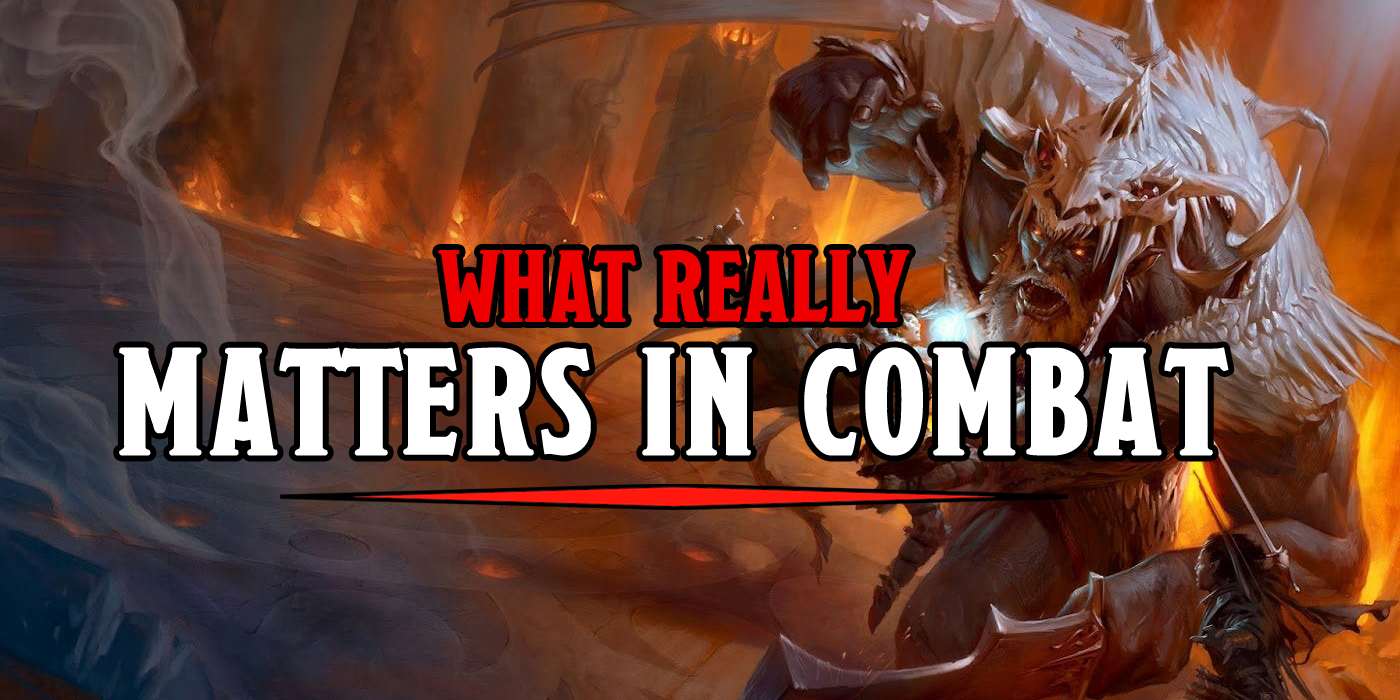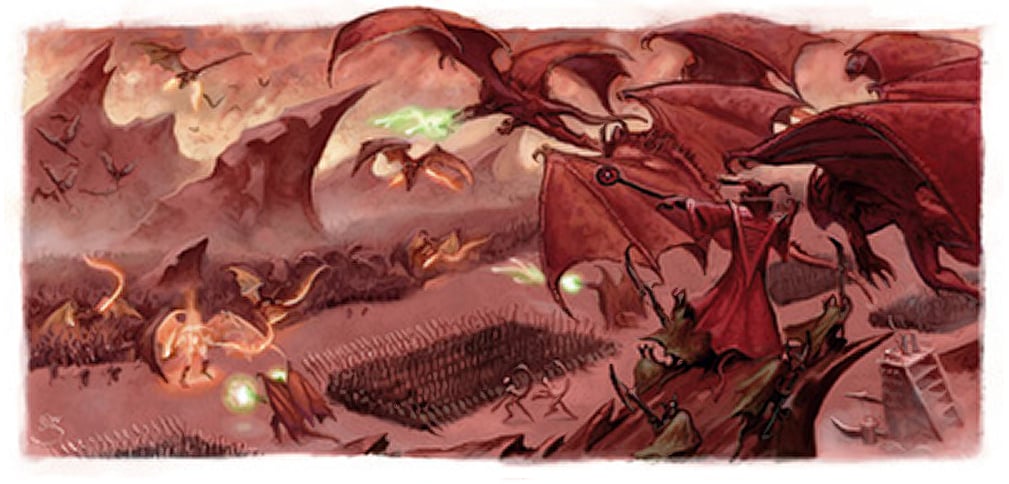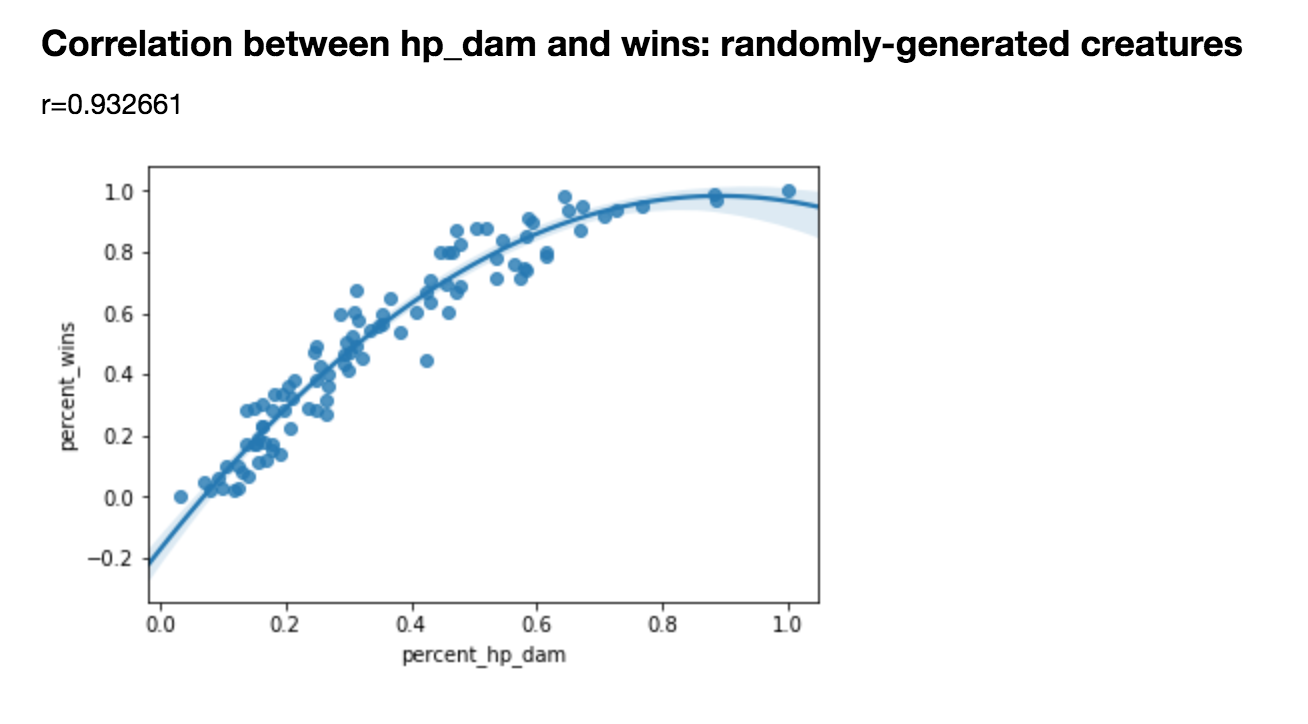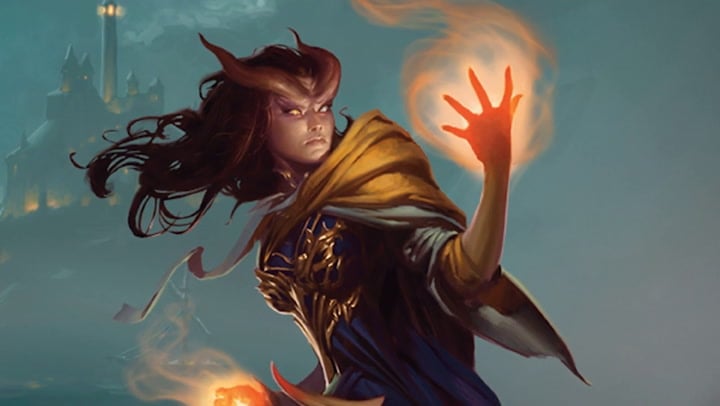D&D: Here’s What REALLY Matters In Combat


Combat in D&D has a ton of variables–what’s your AC, how hard can you hit, did you prepare anything besides Alarm? But really it comes down to two things.
Well, three things if you count preparing something besides Alarm, Jeremy. I mean I get it, it’s a great spell and you downloaded the Star Trek soundboard to your smartphone so you can helpfully sound it every time you cast it. But that’s all you do. You don’t even cast a cantrip. Aside from that, though, combat in D&D might seem fairly complicated. But if you look at the numbers, you only need two stats to wreck shop.
And one GitHub user did exactly that. User cyberscribe (Robert Peake) has fed all manner of combat data through a simulation to find out what really matters in Dungeons and Dragons. I’ll say it again, we live in the future. I just wish the jetpacks were better.
Sure, you can probably still seriously injure yourself with that–but it’s not going to explode or anything. Anyway, before we dive in, bear in mind that making the most mathematically effective choice isn’t always the most fun. I’m looking at you, players who insist on creating Wizards who exclusively cast melee spells. But looking at the data CAN open up some insights into how the game works, and how to fight good in D&D.
Let’s just go through this paper together–it’s pretty cool. There’s a lot of information to glean from it, we’ve broken down the gist of it at the end, but this is some real insightful stuff, and an engaging read too. Without further ado, let’s dive into these data science investigations into the world’s greatest roleplaying game.
The aim of this research is to use computational analysis to provide useful insights to game masters seeking to exploit a deeper understanding of the components of combat effectiveness in service to creating combat encounters that are informed, intentional, and appropriate to the circumstances of their game.
Cyberscribe talks a lot about combat complexity and challenge and why it’s important to understand exactly what makes combat tick when planning their encounters. It’s pretty insightful
[I]t is important for a game master to be able to create challenges for the players so that their accomplishments and progress feel earned. Quantified character levels and creature challenge ratings are used to pit a group of characters against a group of creatures to ensure an appropriate challenge during combat.
A combat encounter that is too easy can be boring; one that is far too difficult can result in the death of one or more players’ characters. While such encounters can be deployed strategically in service to the narrative, when they occur unintentionally, they can be frustrating to both the players and the game master. It is therefore important for a game master to have a realistic understanding of combat effectiveness in order to create encounters that are appropriately challenging and intentional.
However, even within the scope of combat–one subset of the role-playing experience–an encounter can include variables such as: unique terrain features, the starting distance of the encounter, complex spells, powerful magic items, and the relative experience of the game master and players in these types of combat situations. It is therefore impossible to fully simulate all of the factors involved either mathematically or computationally.
Basically, the more you understand how combat works, the better you’ll be able to construct encounters that feel satisfying on both sides of the table. Because you want encounters that occasionally make players feel threatened, and you want encounters that feel like the victory is earned. And moreover, that it’s something that can be earned in the first place.
In order to try and understand what makes combat challenging, and how to cook up the difficulty level of an encounter, first combat had to be broken up into a number of relevant variables. In this research they are:
-
ac(armour class) – measures defensive capability; in order for an attack to succeedd20+hit_modmust equal or excede this value in a turn -
hp(hit points) – measures ability to withstand successful attacks without dying; for each successful attack during a turn the target losesdam_avghit points; whenhpis less than or equal to zero the target is dead -
init(initiative) – measures combat agility;d20+initis rolled at the start of a round; the entity with the highest total number goes firstSubscribe to our newsletter!Get Tabletop, RPG & Pop Culture news delivered directly to your inbox.By subscribing you agree to our Terms of Use and Privacy Policy. -
att_num(number of attacks) – measures speed of attack; the number of attacks that can be made by this entity in a single turn -
hit_mod(to hit modifier) – measures ability to make successful attacks againstacon an attacker’s turn [a.k.a. attack bonus or attack modifier] -
dam_avg(average damage) – measures ability to inflict harm; decrementshpby this amount during a turn when an attack succeedsAdvertisement
With all of these variables in play, Peake sets about simulating a whole bunch of combat as scientifically as possible.
Details of the computational analysis are provided in the form of a Jupyter notebook, which can be executed to reproduce the results of all experiments described.
All of this goes into figuring out what changes your likelihood of winning an encounter. The results are surprising. Some things make sense, like Initiative doesn’t really matter–but then other things are a little mind blowing. Things like: Hit Modifier and Armor Class don’t really matter either.
More surprisingly,
ac(armour class) andhit_mod(hit modifier) also had almost no correlation to combat success (r ~ 0.08 in both cases). Given the extent to which armour is seen as a measure of defensive effectiveness and the hit modifier is seen as a measure of offensive effectiveness, this may seem counter-intuitive to long-time players.
Now that reality is broken and everything you thought you knew turning out to be a lie, what actually does matter? Turns out it’s all about damage and your ability to endure it. The only kind of damage mitigation that matters (in an appreciable way) is your ability to deal out a creature’s HP total before it deals yours. Whether this is by increasing the amount of hit points you have, or the amount of damage you do is up to you. Both are about equally important.
However,
att num(number of attacks) showed a stronger correlation to combat success (r ~ 0.42) as diddam_avg(r ~ 0.48). The product of these two, which we calldam_max(maximum average damage output per turn) showed a slightly higher correlation (r ~ 0.58) as didhp(hit points) (r ~ 0.57).AdvertisementCombining
dam_maxandhpinto a new metric by taking the square root of their product gives ushp_dam(hit-point-damage metric) with a very strong (r ~ 0.93) correlation to combat effectiveness.
There’s even a chart. But basically the more damage you can deal and the more you can endure, the better you’re able to control the fight in your favor. Even vs. high level monsters, you’d be surprised at how much this matters. This means that Fighters and Barbarians can be surprisingly effective, even late game.
There’s an experiment done with a party of 4 Wizards vs. 4 Fighters–though I’m not sure how effectively that’s measuring the effects a Wizard’s spells can have on combat; some of the most devastating spells deal no damage, but can solve a fight immediately. Forcecage, for instance, will shut down many an encounter without even breaking a sweat.
At any rate, there are some amazing take aways from all of this:
The most surprising result is the relatively lower importance of
acandhit_modin predicting combat success. This should be taken in context of a large-scale analysis–in single encounters, a creature that “rarely hits” or “rarely misses” will indeed be highly ineffective or effective (respectively). After all, the game experience is enjoyed in the moment–and the death of a player, while just a tally mark in our analysis, is a significant in-game event. In this way, a conservative challenge rating system may be to everyone’s benefit.AdvertisementWhile low-level parties are vulnerable, there is a perception among game masters that high-level parties can be difficult to challenge in combat. One theory to explain this is that the linear progression of hit points is out of alignment with the original game designer’s vision. Our analysis of the importance of hit points would tend to support the idea that a “damped” progression at higher levels would provide one solution.
However, other options–such as “piling on monsters”, as well as a range of “buffs” exist to provide challenge rating parity. One can also adjust the pairings based on the conservative nature of the system (pitting four
cr20 fighters against a single cr30monster, for example).
And this tracks with a lot of what we know about 5th Edition. As the designers have said players don’t like to miss. The system skews towards everything hitting, and with bounded accuracy there’s only so high you can get your AC and you’ll still get hit. So if you want to fight well in D&D, hit hard and have a lot of hit points.
Or I don’t know, prepare a spell that’ll actually help you in a fight, Jeremy. Happy Adventuring!







